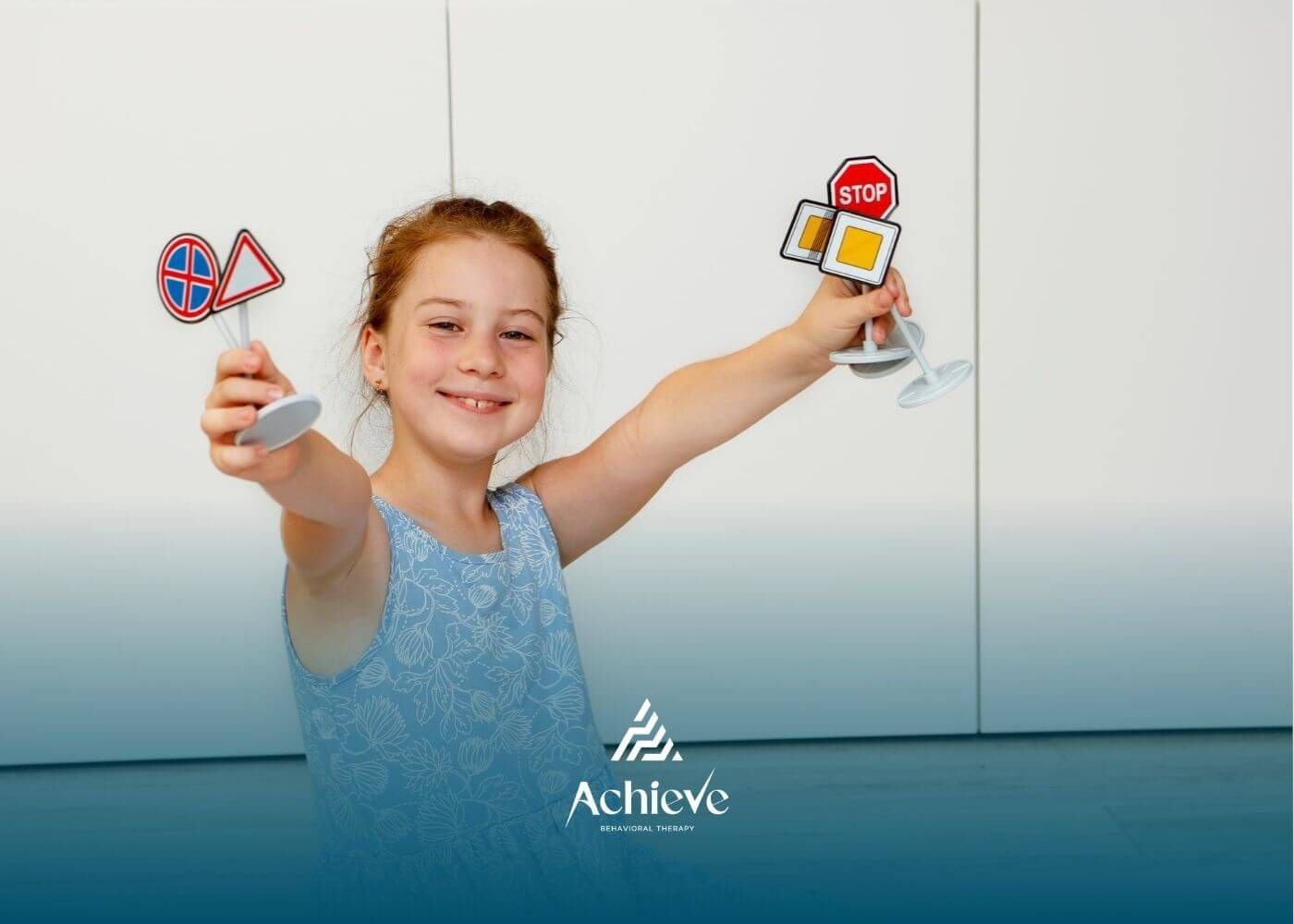Exploring Similarities and Differences of Autism and ADHD in Adults

Understanding Autism and ADHD
Overview of Autism Spectrum Disorder (ASD)
Autism Spectrum Disorder (ASD) is a neurodevelopmental condition that affects how individuals communicate and interact with others. It is characterized by challenges in social interactions, communication difficulties, and repetitive behaviors. ASD manifestations can vary widely among individuals, making it a highly diverse condition.
Key Characteristics of ASD:
- Social Interaction Challenges: Difficulty in understanding social norms, maintaining eye contact, and forming peer relationships.
- Communication Difficulties:
Trouble with verbal and non-verbal communication, such as interpreting facial expressions or using language appropriately.
- Repetitive Behaviors: Engaging in repetitive activities or movements, strict adherence to routines, and intense focus on specific interests.
For those seeking more detailed information on symptoms, please visit our autism vs ADHD symptoms page.
Overview of Attention Deficit Hyperactivity Disorder (ADHD)
Attention Deficit Hyperactivity Disorder (ADHD) is another common neurodevelopmental disorder. It primarily affects an individual's ability to maintain attention, control impulsive behaviors, and manage hyperactivity. ADHD can vary in severity, with some people exhibiting predominantly inattentive symptoms, while others may show hyperactive-impulsive symptoms, or a combination of both.
Key Characteristics of ADHD:
- Inattention: Struggling to focus, follow instructions, and complete tasks.
- Hyperactivity:
Excessive movement, fidgeting, and an inability to stay seated.
- Impulsivity: Acting without thinking, interrupting others, and having difficulty waiting for a turn.
Both ASD and ADHD can co-occur, meaning they can exist together in some individuals. This co-occurrence can complicate diagnosis but also highlights the similarities in how these disorders impact brain development and executive functioning. To explore the diagnostic criteria for these conditions, please visit our autism and ADHD diagnosis criteria page.
Understanding the nuances of ASD and ADHD can help in identifying the unique challenges faced by individuals with these conditions and can guide effective treatment and support strategies. Learn more about the shared traits and distinct differences on our similarities between autism and ADHD page.
Key Differences Between Autism and ADHD
Understanding the key differences between Autism Spectrum Disorder (ASD) and Attention Deficit Hyperactivity Disorder (ADHD) is crucial for parents, educators, and professionals involved in the care and support of individuals with these conditions.
Social Interaction Challenges
Social interaction challenges present differently in individuals with autism and ADHD.
- Autism: People with autism
often struggle with social communication skills and exhibit restricted and repetitive behaviors. These characteristics persist into adulthood, suggesting a continuity of symptoms over the lifespan. Autistic individuals might face difficulties in understanding social cues, maintaining eye contact, and participating in typical social interactions. Masking behaviors, where autistic individuals camouflage their symptoms to fit in socially, are common and can often make their social challenges less apparent.
- ADHD: Adults with ADHD may also experience social challenges, but these difficulties are often linked to impulsivity, hyperactivity, and inattentiveness. Individuals with ADHD might interrupt conversations, have trouble waiting their turn, or struggle to follow through on social commitments. Unlike autism, these social challenges are more rooted in inattention and impulsivity rather than a fundamental difficulty with social understanding.
Executive Functioning Variances
Executive functioning encompasses a range of cognitive processes that regulate, control, and manage other cognitive processes. Differences in executive functioning can significantly impact daily life for individuals with autism and ADHD.
- Autism: Executive functioning challenges in autistic individuals can include difficulties with planning, flexibility, task initiation, and time management. Autistic women tend to mask these challenges more effectively than men, which can lead to underdiagnosis or misdiagnosis. These individuals might develop compensatory structures in their lives to help them function more efficiently as they age.
- ADHD: Executive functioning issues are a hallmark of ADHD. Adults with ADHD may exhibit poor organizational skills, difficulty prioritizing tasks, problems with time management, forgetfulness, and an inability to follow through on tasks. These challenges stem from the inattention and impulsivity associated with ADHD and can have a significant impact on daily functioning.
For more information on how these conditions can co-occur, visit our article on autism and ADHD comorbidity. Together, understanding these differences helps in developing tailored support strategies and interventions for individuals with these conditions.
Commonalities Between Autism and ADHD
Neurodevelopmental Impact
Both Autism Spectrum Disorder (ASD) and Attention Deficit Hyperactivity Disorder (ADHD) are neurodevelopmental disorders that significantly impact brain development. This can
affect various aspects of an individual's life, including movement, language, memory, social skills, and the ability to focus. To understand the prevalence of these conditions among adults in the U.S., consider the following data:
| Condition | Affected Adults in U.S. | Percentage of Adult Population |
|---|---|---|
| Autism Spectrum Disorder (ASD) | Over 5 million | 2.20% |
| Attention Deficit Hyperactivity Disorder (ADHD) | Around 10 million | 4.40% |
These statistics exemplify the significant presence of these conditions within the adult population. The co-occurrence of ASD and ADHD is also notable, with research indicating that 28% to 44% of adults with ASD may also have ADHD. This overlap underscores the importance of recognizing the shared neurodevelopmental impact of these disorders.
Executive Functioning Affected
Executive functioning, which includes skills such as planning, organizing, time management, and cognitive flexibility, is often impaired in individuals with both ASD and ADHD. These challenges can manifest differently in each individual but generally include difficulties with:
- Planning and Organizing
- Task Initiation and Completion
- Managing Time Effectively
- Regulating Emotions
- Maintaining Focus and Attention
Research has highlighted the frequent co-occurrence of ADHD traits in individuals with ASD and vice versa. This overlap is observed in clinical populations, family studies, and genetic studies, emphasizing the intertwined nature of these conditions.
Understanding the developmental trajectories of co-occurring ADHD and ASD symptoms is crucial for effective treatment planning and improved outcomes.
Diagnosis and Challenges
Identifying Autism Spectrum Disorder (ASD) and Attention Deficit Hyperactivity Disorder (ADHD) in adults presents unique challenges. The complexities involve overlapping symptoms, co-occurrence, and differentiating these conditions from other mental health disorders.
Complexities in Identifying Autism and ADHD
Autistic traits in adults are often subtle, especially in women. Autistic women may exhibit less obvious signs, making diagnosis more difficult. Additionally, adults with ADHD might not be aware of their condition. ADHD symptoms like difficulty focusing, prioritizing tasks, meeting deadlines, and controlling impulses can be mistaken for mood swings or anger issues.
Diagnosis of ADHD in adults is further complicated as symptoms often overlap with other conditions like anxiety and mood disorders.
Many adults with ADHD also experience depression or anxiety, making it difficult to isolate ADHD as the primary condition.
| Symptom | ADHD | Autism |
|---|---|---|
| Difficulty focusing | ✔️ | ✔️ |
| Impulsivity | ✔️ | ❌ |
| Social interaction challenges | ❌ | ✔️ |
| Repetitive behaviors | ❌ | ✔️ |
| Mood swings | ✔️ | ❌ |
Co-Occurrence and Overlapping Symptoms
Research indicates that approximately 40% of children with autism also have ADHD and vice versa. This co-occurrence complicates diagnosis due to overlapping symptoms. For example, both conditions affect executive functioning, which involves planning, organizational skills, and managing time.
ADHD and autism can also present similarly to other developmental issues, like social pragmatic communication disorder and attachment issues. This overlap necessitates a comprehensive assessment to accurately identify the condition.
Identifying the differences and similarities between autism and ADHD is crucial for accurate diagnosis and treatment.
Treatment Approaches
When dealing with autism and ADHD in adults, a comprehensive treatment plan often involves a combination of pharmacological interventions and behavioral therapies. Each approach plays a unique role in managing symptoms and improving quality of life.
Pharmacological Interventions
Pharmacological treatment is a cornerstone in managing symptoms of ADHD and can also be beneficial for individuals with co-occurring autism and ADHD. Medications aim to reduce hyperactivity and impulsivity and improve attention span.
Stimulant medications, such as methylphenidate (Ritalin) and amphetamines (Adderall), are commonly prescribed for ADHD. Studies indicate that these medications can effectively reduce core ADHD symptoms in individuals with both ADHD and autism, although the response rate is often lower compared to those with only ADHD.
Nonstimulant medications, including atomoxetine (Strattera) and guanfacine (Intuniv), have shown promise in reducing hyperactivity and inattention in youth with ASD. These medications are often preferred due to their lower incidence of adverse effects.
| Medication Type | Common Medications | Primary Benefits | Adverse Effects |
|---|---|---|---|
| Stimulants | Methylphenidate, Amphetamines | Reduces hyperactivity, improves focus | Potential for sleep issues, appetite loss |
| Nonstimulants | Atomoxetine, Guanfacine | Reduces inattention, fewer adverse effects | Drowsiness, fatigue |
Behavioral Therapy and Interventions
Behavioral therapies play a critical role in managing autism and ADHD symptoms, often complementing pharmacological treatments. Applied Behavior Analysis (ABA) is a widely recognized therapy known for its effectiveness in treating autism and has shown benefits for individuals with ADHD as well.
ABA therapy focuses on understanding individual behaviors and implementing strategies to encourage positive behavior while reducing harmful or disruptive behaviors. Techniques used in ABA therapy include reinforcement, skill-building activities, and social skills training. These strategies prove beneficial for both children and adults with autism and ADHD.
Other behavioral interventions include Cognitive Behavioral Therapy (CBT), which helps individuals understand and manage their behavior patterns and emotional responses. CBT can be particularly effective in addressing issues such as low self-esteem and stress management, which are common in adults with ADHD.
Combining different behavioral techniques, such as social skills training and executive functioning coaching, allows for a more personalized and comprehensive approach to treatment. Therapies like ABA and CBT can significantly improve daily functioning and quality of life for individuals dealing with autism and ADHD.
Coping Strategies and Support
Impact of Masking Behaviors
Masking, often referred to as camouflaging, is a common coping strategy among adults with autism. Many autistic individuals engage in masking to blend in, avoid drawing attention, or succeed in social settings, workplaces, or educational environments. This involves imitating the speech and body language of others, adopting different personas, or using subtle stimming behaviors, such as fidgeting with a spinner.
However, masking can have significant negative impacts on mental health. Autistic individuals may find masking behaviors draining and exhausting. Constantly hiding one's true self can lead to feelings of isolation and misunderstanding. Additionally, women are often more adept at masking executive functioning challenges compared to men. Over time, individuals of all genders may learn to create compensatory structures in their lives, making their differences less apparent to others as they age.
Accessing Effective Therapies
For adults diagnosed with autism and ADHD, accessing effective therapies can significantly improve their quality of life. A proper diagnosis opens up pathways for various interventions and support strategies, which can help manage symptoms and improve overall well-being.
Therapeutic Options Include:
Pharmacological Interventions:
Medications for ADHD can help manage symptoms like inattention and hyperactivity.
Behavioral Therapy and Interventions:
- Sensory integration treatments to address sensory processing issues.
- Cognitive Behavioral Therapy (CBT) to help manage anxiety and emotions.
- Social skills training to improve communication and interaction abilities.
Creating Supportive Environments: Building a safe and accepting environment is essential for individuals to be their authentic selves, reducing the need for masking and mental burnout.
Using a combination of pharmacological and behavioral approaches tailored to individual needs can provide comprehensive support, leading to better outcomes for adults coping with both conditions.
Conclusion
Autism and ADHD in adults can present unique challenges as well as remarkable strengths. While both conditions share features such as difficulties with attention, organization, and social interaction, they are distinct in their root causes and expressions. Adults with autism may experience sensory sensitivities, repetitive behaviors, and deeper challenges with social reciprocity, while adults with ADHD often struggle with impulsivity, distractibility, and executive functioning. For those who live with both conditions, daily life can feel especially complex, but with the right support, adults can build strong coping strategies, succeed at work, and enjoy meaningful relationships. Early recognition, professional evaluation, and evidence-based interventions provide a path toward confidence, independence, and improved quality of life.
At Achieve Behavioral Therapy, we help individuals and families understand and manage the challenges of autism and ADHD. Our team of compassionate BCBAs and therapists provides individualized ABA therapy across New Jersey, and North Carolina, and skill-building strategies to support communication, organization, social skills, and independence. Whether you are seeking support for yourself or a loved one, we’ll work with you to design a plan that builds on strengths and addresses real-life challenges.
Contact us today to learn how our ABA therapy programs can support adults living with autism and ADHD on their journey to a more confident and fulfilling life.
Frequently Asked Questions
Can an adult be diagnosed with both autism and ADHD?
Yes. Many adults live with both conditions, and co-occurrence is common. A professional evaluation can help clarify symptoms and guide treatment strategies.
What are the signs of autism and ADHD in adults?
Adults with autism may experience sensory sensitivities, difficulty reading social cues, and reliance on routines. Adults with ADHD often face challenges with time management, focus, and impulsivity. When both occur, symptoms can overlap and complicate daily functioning.
How can therapy help adults with autism and ADHD?
Therapy can provide strategies for improving executive functioning, reducing anxiety, building social and communication skills, and managing sensory needs. ABA therapy, in particular, focuses on individualized goals to promote independence and quality of life.
SOURCES:
https://www.wwmedgroup.com/blog/diagnosing-adhd-and-autism-in-adults/
https://www.nhs.uk/conditions/attention-deficit-hyperactivity-disorder-adhd/
https://www.webmd.com/add-adhd/adult-adhd-autism
https://pmc.ncbi.nlm.nih.gov/articles/PMC3441928/
https://www.mayoclinic.org/diseases-conditions/adult-adhd/symptoms-causes/syc-20350878
https://www.autismspeaks.org/signs-autism-adults
Need Support?
We're Here to Help!
Our experienced team is ready to assist you. Reach out today to discuss how we can support your child's development and well-being.
Get started with expert ABA therapy today.













